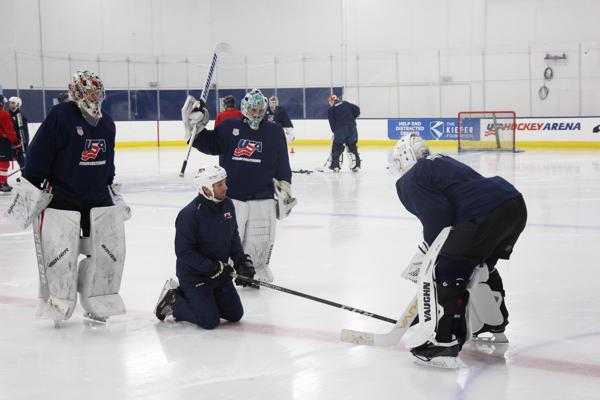When thinking about youth sports, player education and development, it’s got to be about the kids first. That goes for every player and every position on every team.Â
Many coaches don’t intentionally neglect goaltenders when designing practice activities. They might be in a rush to the rink or want to focus on offensive activity. Regardless, there are a few simple things a coach can do to make every drill a ‘goalie drill.’Â
Thompson said that any activity that involves a goaltender should allow the goalie to be prepared before the shot is taken and then having time to play out the rebound and/or recover to where the puck went after the initial shot was taken.Â
“If the coaches require that all games and activities give their goalies time to prepare, time to make the save, and time to compete on rebounds if necessary, they can dramatically improve the training environment without a whole lot of effort in their practice design,†said Thompson. “That alone is going to be a big change in their goalie’s development.â€
Another thing that a coach can do to make their goaltenders feel more involved, is to speak to them directly, just like they often do with their players who play forward or defense when explaining the activity.Â
“A very simple to thing to incorporate, for every single activity that they design, when they’re thinking about what feedback they’re going to plan for the skaters, plan something to say to the goalies,†Thompson said.Â
He gives this example: “If you’re working on underhandling the puck for skaters and you don’t want them to stickhandle before they shoot, maybe the cue for the goalie is, ‘You want to make sure your feet are set before the shot is taken – so get to your spot and make sure your feet are set.’ It’s as simple as that. If you’re going to give a cue to your forwards and defense, think of what a cue can be for your goalie and make sure that the feedback is equal for all parties.â€



